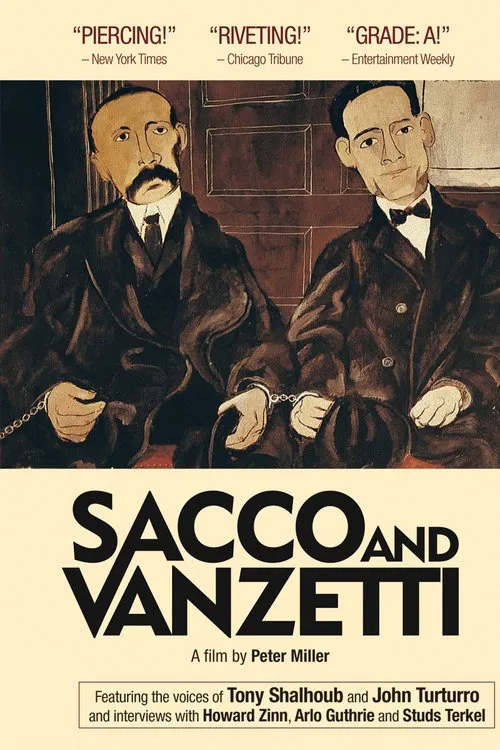Sacco and Vanzetti

Trama
Sacco and Vanzetti, directed by Paul Jarrico and Judith Malina, is an 80-minute-long documentary film that recounts the tragic tale of Nicola Sacco and Bartolomeo Vanzetti, two Italian immigrant anarchists whose lives were cut short by the prejudices of a biased justice system in Boston. The film, serving as a powerful tribute to these two courageous individuals, aims to bring to light the injustices faced by Sacco and Vanzetti, who fell victim to an unfairly stacked trial and a judicial system riddled with anti-Italian and anti-anarchist sentiment. The narrative of the documentary picks up in 1920, when Sacco and Vanzetti, both radical anarchists with strong ties to the labor movement, find themselves caught up in a sensationalized murder case in South Braintree, Massachusetts. The two men, who had been living and working in the United States since the early 1900s, were involved in the anarchist movement and advocated for the rights of workers and social justice. However, their fervent dedication to their cause would eventually prove to be their downfall. The crime of which Sacco and Vanzetti were accused took place on January 15, 1920, when two payroll guards were shot and killed during a robbery. In a shocking turn of events, Sacco and Vanzetti, two members of Boston's Italian-American anarchist community, were arrested, charged, and put on trial for the murders. The trial that ensued would become a highly publicized spectacle, with the media fanning the flames of anti-Italian and anti-anarchist sentiment. Despite a lack of concrete evidence and the testimony of several witnesses who placed Sacco and Vanzetti at the scene, the prosecution's case relied heavily on circumstantial evidence and the dubious testimony of a key witness who confessed to the crime years later. The trial was also tainted by the inflammatory rhetoric of the prosecutor, who repeatedly emphasized the anarchist leanings of the defendants and their supposed threat to American society. The documentary effectively captures the anti-Italian and anti-anarchist atmosphere that pervaded the trial, as well as the broader social and cultural context in which the case took place. The filmmakers weave together a rich tapestry of archival footage, photographs, and contemporary accounts to recreate the events of the trial and its aftermath. Through the use of extensive archival materials, the film reveals the depth of prejudice that the two defendants faced during the trial and in the years leading up to it. The media of the time, particularly the newspapers, actively contributed to the negative public perception of the two men by emphasizing their foreign birth and their radical ideologies. One particularly striking aspect of the documentary is its portrayal of the widespread support and sympathy that Sacco and Vanzetti received from the public, both in the United States and abroad. As their plight became increasingly well-known, a powerful movement emerged to advocate for their release and exoneration. Sacco and Vanzetti, in particular, had become international celebrities of sorts, with prominent intellectuals and activists around the world - including Albert Einstein, Upton Sinclair, and Emma Goldman - speaking out on their behalf and advocating for justice. The outpouring of support from the public, combined with the efforts of their lawyers and the international pressure they came under, only served to underscore the deep-seated prejudice that had driven the original verdict. The documentary masterfully captures the complexities and nuances of this pivotal moment in American history, shedding light on the dark underbelly of a justice system that, at the time, was far from fair and impartial. The Sacco and Vanzetti case continues to serve as a cautionary tale about the dangers of prejudice and the importance of upholding the principles of fairness and justice. The film's conclusion, however, serves as a stark reminder of the tragic fate that awaited Sacco and Vanzetti. Despite the overwhelming public support they enjoyed, both men were denied clemency and ultimately executed on August 23, 1927, in the electric chair of the state prison in Charlestown. In its final moments, the documentary leaves viewers with a lasting sense of sorrow and outrage, as the full weight of the injustice that Sacco and Vanzetti endured finally becomes clear. This tragic episode in American history serves as a poignant reminder of the ongoing struggle for social justice and the need for vigilance in the face of prejudice and oppression.
Reseñas
Recomendaciones


